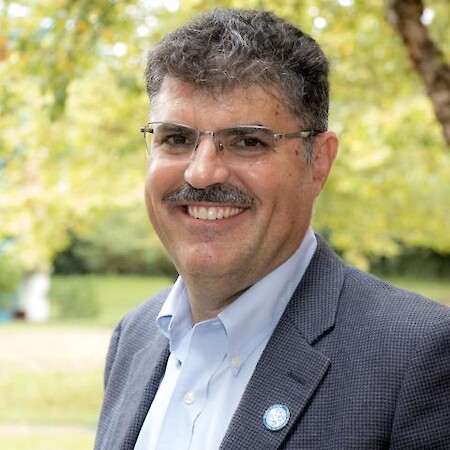Chesapeake Bay Program-UMCES partnership
Chesapeake Bay Program-UMCES partnership
The University of Maryland Center for Environmental Science (UMCES) has a well developed partnership with the Chesapeake Bay Program (CBP). Environmental assessment and science communication of restoration projects is a topic in which the Integration and Application Network (IAN) has been actively involved, including in its partnership with CBP. UMCES scientists are particularly knowledgeable about watershed and estuarine processes and provide technical assistance and training opportunities for CBP activities. In addition, UMCES scientists have experience with innovative approaches in restoration ecology. UMCES uses its Annapolis Synthesis Center for much of the project management, coordination, and administration of the UMCES/CBP partnership.
The CBP partnership was established in 1983 with a charter to protect and restore Chesapeake Bay. Recent cost estimates to restore water quality in Chesapeake Bay are in excess of $20 billion, and the CBP is subjected to intensive and continual scrutiny. There is an opportunity to have national and international impact through dissemination of results. Chesapeake Bay is considered the ‘model’ ecosystem restoration program in the world, and thus needs to have the necessary science underpinnings to showcase the application of an adaptive management approach using science-based ecosystem management.
UMCES is uniquely positioned to deal with issues on a holistic watershed basis and therefore is ideally suited to support the CBP by interacting with and supporting locally-led efforts within the watersheds to focus regional and state efforts. It is essential that the restoration efforts be carefully targeted and well coordinated to explicitly solve the current environmental challenges facing Chesapeake Bay. UMCES, and in particular the IAN initiative, is striving to forge linkages between management, monitoring, and research within the Chesapeake Bay region through promoting interactions between technical resources within the scientific community and the needs of the management community. Some of the IAN activities that have been initiated include the following: the newsletter series, which cogently takes complex scientific knowledge and distills it into information useful to the management community; conferences relevant to specific issues (such as the Hurricane Isabel in Perspective conference); and an Annapolis seminar series which aims to actively link researchers and managers by accessing expertise on a wide range of relevant watershed and Bay issues.
UMCES also works in partnership with the NOAA Chesapeake Bay Office, and these collaborative efforts are increasingly linking these institutions with the specific aim of maximizing overall resources and establishing more effective results. The EcoCheck program, a NOAA/UMCES partnership based in Oxford is an example, and this partnerships links through the Tidal Monitoring Assessment Workgroup (TMAW) to assisting CBP in the redesign of the monitoring framework and indicators within Chesapeake Bay.
Key Personnel
Timeframe
- Start: 2007-06-30
- Finish: 2023-12-31
- Duration: 16 years, 6 months


